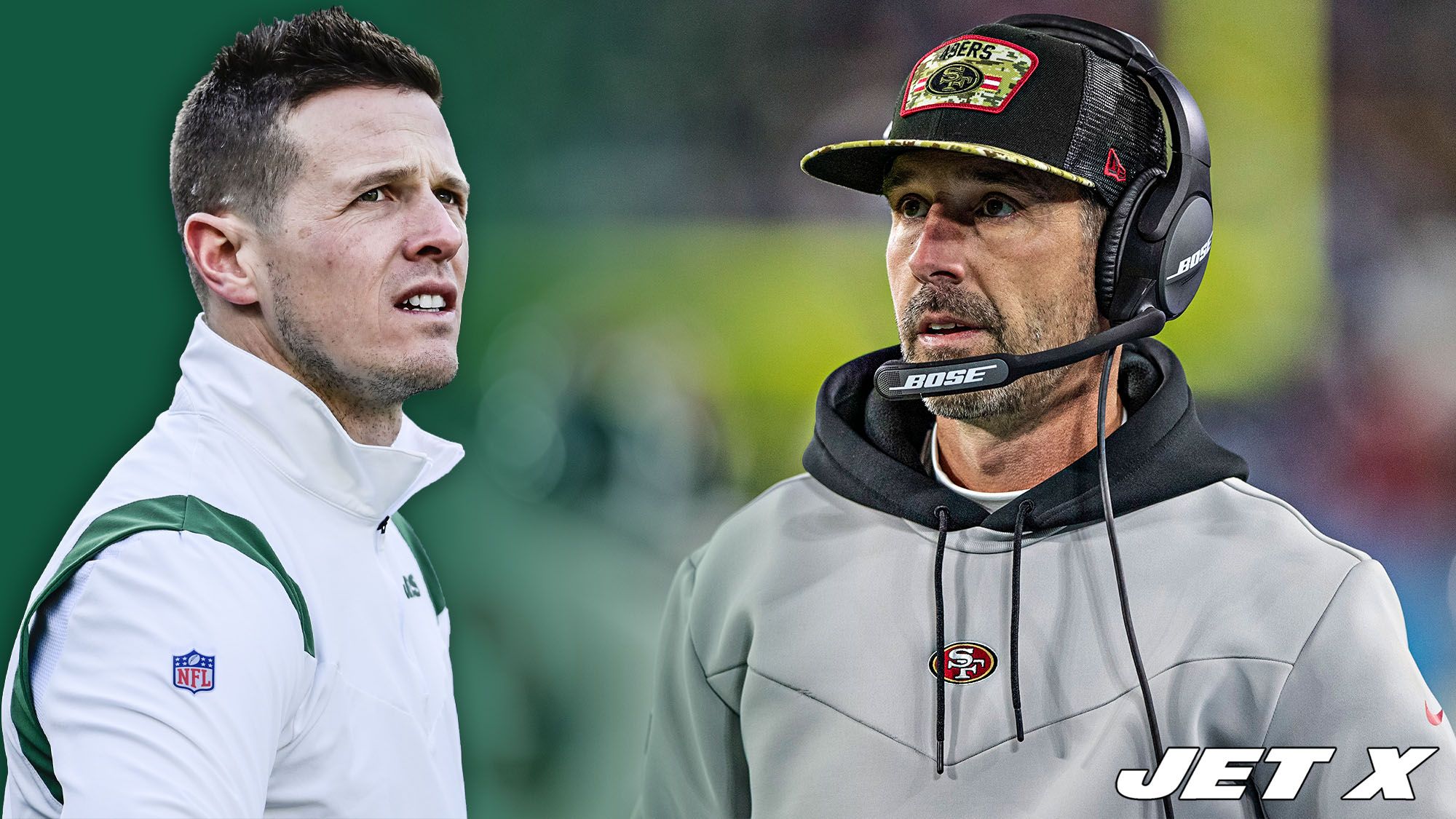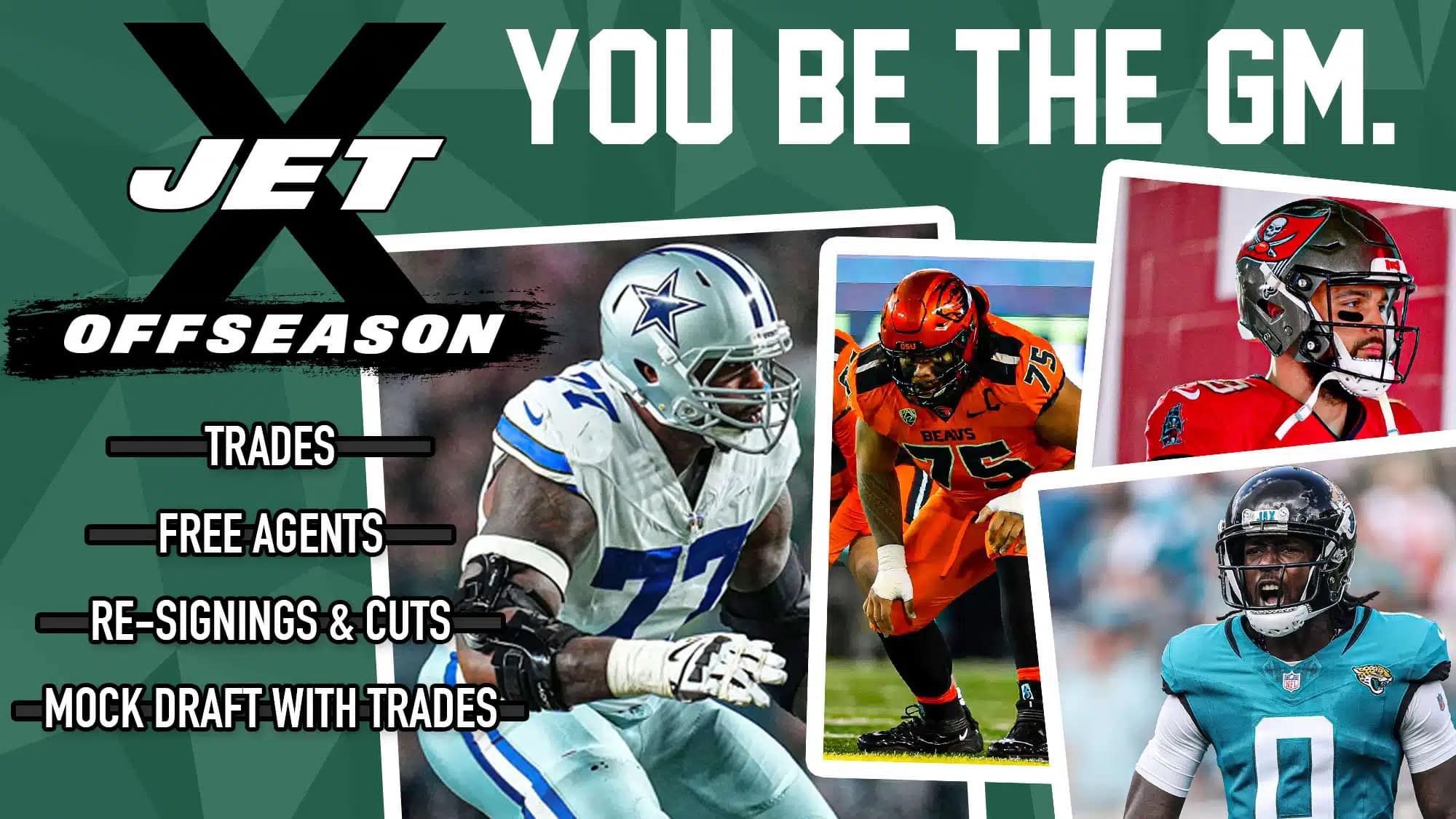One of the New York Jets’ biggest offseason needs is… fullback?
When Robert Saleh came to the New York Jets, he brought more than just his passion. He also brought along several members of the 49ers’ NFC Championship-winning coaching staff. Most notably, Saleh brought along their passing game coordinator, Mike LaFleur, to be New York’s offensive coordinator.
LaFleur had been learning from Kyle Shanahan since 2014 when he got his first job in the NFL with the Cleveland Browns. From there, LaFleur followed Shanahan to the Atlanta Falcons from 2015-2016 and then the San Francisco 49ers from 2017-2020.
Shanahan is widely considered to be one of the best offensive head coaches in the NFL, leading an unstoppable run game. His scheme has elevated the play of his offense when injuries and poor quarterback play would devastate most teams.
Unfortunately, two of the Jets’ weakest positions in 2021 also happened to be the two most important positions in Shanahan’s scheme.
Tight end is arguably the Jets’ biggest need this offseason; however, the often-overlooked fullback position is also crucial to run the Shanahan system. This was proven at the end of the 2021 season.
Nick Bawden’s impact on the Jets offense
Fullback Nick Bawden joined the Jets practice squad in Week 3 and made his season debut seven weeks later in Week 10. He quickly made his presence felt.
In his Week 11 game against the Dolphins (his first game playing at least 10% of the offensive snaps, as he played 8 snaps, making up 13%), Bawden registered an 89.9 overall grade at Pro Football Focus. It ended up being the fourth-highest single-game PFF grade earned by a fullback in 2021.
Bawden’s success as a run blocker had a clear impact. The Jets ran for 102 yards against Miami. At that point, it was just the second time all year that the Jets eclipsed 100 rushing yards and their first time doing so since Week 2.
Over the rest of the year, Bawden wound up finding a small role in the Jets offense. He finished the season with nine games played, logging a total of 57 offensive snaps (6.3 per game).
Bawden played at least 10% of the offensive snaps in only six games of those nine games. However, in those games, the Jets rushing attack was among the best in the NFL. The Jets rushed for 133.3 yards per game in the six games where Bawden played at least 10% of the offensive snaps compared to just 78.8 yards per game in their other 11 games.
Even with the Jets losing tight ends Tyler Kroft and Ryan Griffin due to injury, the run game made huge improvements late in the year. It is exciting to picture the levels this offense could reach if it was built to run its system to perfection.
Competent tight ends and a fullback would fully unlock Mike LaFleur’s scheme
The reason I stress the importance of building the Jets roster like the 49ers is simply due to the success that San Francisco has achieved through its overwhelming dominance in the run game.
Since 2019, the 49ers rank second in rushing touchdowns (64) and sixth in rushing yards (6,360). In their four playoff wins over that span, they averaged an incredible 186.5 rushing yards per game.
The fullback is a dying breed in the NFL. Only 22 teams utilized a true fullback in 2021 and a mere 12 teams had a fullback play over 100 offensive snaps.
However, no team played a fullback more than the 49ers. San Francisco’s Kyle Juszczyk led the position with 610 offensive snaps (35.9 per game). It was his fifth consecutive season leading the position in snaps since joining the 49ers in 2017.
LaFleur attempted to emulate Shanahan’s system at the start of the season but quickly learned the Jets roster was not equipped to do so.
In Week 1, tight end Trevon Wesco played a big role at fullback (20 snaps) and struggled mightily. Wesco had a 51.1 PFF grade and the Jets had their second-worst rushing performance of the season (45 yards).
LaFleur largely removed Wesco and the fullback position from the offense over the next two weeks until Wesco returned to a featured role at fullback from Weeks 4-7 (19.7 snaps per game). The Jets failed to hit even 70 rushing yards in any of their three games over that span.
Additionally, LaFleur tried using a lot of two-tight-end sets, running them on 40% of the Jets’ offensive plays from Weeks 1-5. However, Kroft and Griffin disappointed, especially in pass protection, and the offense struggled as a result.
What makes Shanahan’s scheme unstoppable
The wide zone scheme that Shanahan and Rams head coach Sean McVay employ was unstoppable early in their careers but the league is constantly working on counters.
The Rams discovered this in Super Bowl LIII when the Patriots held them to a mere three points by putting six men on the line.
However, the versatility of fullback Kyle Juszcyk and tight end George Kittle provides Shanahan with a counter to this.
Shanahan still primarily uses zone schemes but now he has started to counter with power running plays. Defenses are forced to decide to cover the edges for the wide zone or the middle against power running. This unstoppable and versatile run game opens up the play-action attack.
Shanahan’s passing attack revolves around play-action and creating yards after the catch. These passer-friendly concepts elevate the play of Jimmy Garoppolo, who has earned an impressive 34-14 record since joining the 49ers.
Even backups and no-name quarterbacks like Nick Mullens and C.J. Beathard have been 300-yard passers in this system, as LaFleur showed he could do with Jets backup Mike White. Imagine the level this scheme can reach with a passer as talented as Zach Wilson.
However, the Jets roster still needs plenty of work – including at fullback.
Play: 👉 the Jet X Offseason Simulator
Looking forward
Fortunately, the Jets have plenty of assets to add playmakers this offseason and better emulate the 49ers’ offense.
In 2022, the tight end position will have one of its best free agent and draft classes I can remember. Considering the state of the Jets’ tight end room, I wouldn’t be surprised if the Jets add three players.
I like to dream that the Jets will sign Dallas Cowboys tight end Dalton Schultz before drafting Colorado State’s Trey McBride and Ohio State’s Jeremy Ruckert in the second and fourth rounds.
At fullback, Nick Bawden is set to become an unrestricted free agent. Bawden has played well and could return but I would expect the Jets to bring in competition regardless.
Thankfully, neither position requires premium capital to find a viable starter.
The final piece to the puzzle – a dominant yards-after-catch receiver – is within reach as well.
Jets wide receiver Elijah Moore and current free agent Braxton Berrios led the Jets in these categories ranking 30th (4.7 yards) and 15th (5.6 yards) out of 99 qualified wide receivers in 2021.
However, this draft class has two first-round wide receiver prospects that dominated in this area in Jameson Williams and Treylon Burks. Williams ranked fourth in college football with 722 yards after the catch in 2021. Burks had a ridiculous 15 broken tackles on 65 receptions.
With arguably the most assets in the NFL, the Jets have the opportunity to build around Zach Wilson and level up this offense. It all starts with getting the pieces that are necessary to run the Shanahan scheme to its utmost potential.


